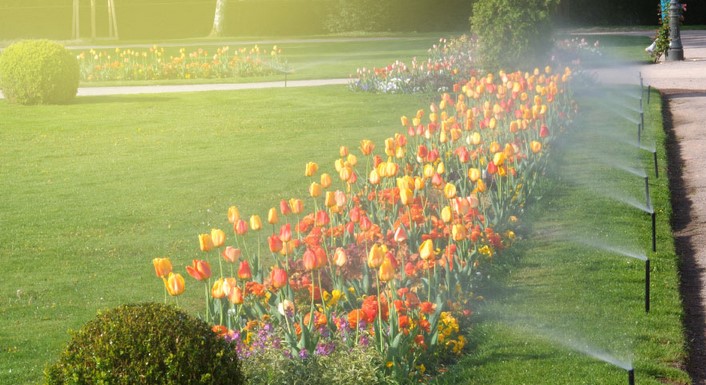Smart Irrigation Systems for Water Efficiency

Source:https://www.facilitiesnet.com
In an age where sustainability and resource conservation are more important than ever, homeowners, farmers, and property managers are turning to smart irrigation systems to manage water use efficiently. These intelligent watering solutions go far beyond traditional sprinkler systems, using data-driven technology to deliver water precisely when and where it’s needed. From residential gardens to large agricultural operations, smart irrigation offers a practical, eco-friendly, and cost-effective solution that promotes healthy plant growth while minimizing waste. This article explores the functionality, benefits, and future innovations of smart irrigation systems, showing how they are revolutionizing water management.
1. Understanding Smart Irrigation Systems
Smart irrigation systems use advanced sensors, controllers, and connectivity features to automate and optimize watering schedules. Unlike traditional systems that operate on fixed timers, smart systems adapt to environmental conditions such as weather, soil moisture, and plant needs in real time.
a. Core Components and Technology
Most smart irrigation systems consist of the following key elements:
- Smart Controllers: These are the brains of the system, often connected to Wi-Fi or cellular networks, allowing users to manage irrigation remotely via smartphones or computers.
- Weather Integration: By accessing real-time weather data, the system can delay or increase watering based on rainfall, temperature, wind, and humidity.
- Soil Moisture Sensors: Placed in the ground, these sensors measure the amount of moisture in the soil, ensuring water is only applied when necessary.
- Flow Meters: These monitor water usage and help detect leaks or inefficiencies in the system.
- Zone Management: The ability to create and control multiple watering zones allows for precise irrigation of different plant types or landscape areas.
Together, these components allow for intelligent irrigation tailored to the unique requirements of each environment.
2. Benefits of Smart Irrigation Systems
The shift to smart irrigation is driven by a combination of environmental, economic, and operational benefits. Whether used in residential, commercial, or agricultural settings, these systems offer compelling advantages.
a. Water Conservation
One of the most significant benefits is the reduction in water usage. Traditional irrigation systems often overwater or apply water at inappropriate times, leading to waste. Smart systems ensure that only the necessary amount of water is used, based on real-time environmental conditions. This can reduce water consumption by 30% to 50%, which is particularly important in regions facing water scarcity.
b. Cost Savings
By conserving water, smart irrigation systems lower utility bills over time. In large-scale operations such as farms, golf courses, or public parks, the financial savings can be substantial. Additionally, early detection of leaks and system inefficiencies prevents costly repairs and water loss.
c. Improved Plant Health
Overwatering can lead to root rot, fungus, and other plant diseases. Underwatering, on the other hand, can stress or kill plants. Smart irrigation systems promote optimal plant health by delivering the right amount of water at the right time, encouraging deeper root growth and more resilient landscapes.
d. Remote Management and Automation
With mobile apps and cloud-based platforms, users can control and monitor their irrigation systems from anywhere in the world. This is particularly beneficial for property managers or farmers who need to oversee multiple locations. Automation also reduces the need for manual intervention, saving time and labor.
3. A New Idea: AI-Powered Predictive Irrigation Networks
While current smart systems are highly effective, the next generation of innovation lies in AI-powered predictive irrigation networks. These systems will combine artificial intelligence with machine learning to forecast water needs more accurately and autonomously than ever before.
a. How Predictive Irrigation Works
Predictive irrigation networks collect and analyze vast amounts of data from a variety of sources:
- Historical weather patterns and forecasts
- Soil conditions and moisture levels
- Plant growth stages and crop type
- Satellite imagery and drone surveys
- Real-time data from other connected sensors in the ecosystem
AI algorithms then use this data to predict future irrigation needs and adjust watering schedules proactively. For example, if a heatwave is expected in three days, the system might increase watering slightly today to improve soil moisture retention and minimize plant stress later.
b. Integration with Agricultural and Urban Planning
In urban areas, predictive irrigation systems could integrate with smart city infrastructure to optimize green space maintenance. For agriculture, AI-powered systems could align irrigation schedules with crop development cycles, nutrient application, and harvest planning, maximizing yield and reducing resource use.
c. Sustainability and Policy Compliance
As water regulations become more stringent, especially in drought-prone regions, predictive systems can help ensure compliance with local water-use policies. These systems can automatically adapt to water restrictions, making it easier for property owners and farmers to avoid penalties while maintaining healthy landscapes or crops.
d. User-Friendly Interfaces
Despite the complexity of the backend technology, user interfaces will become even more intuitive. Through natural language processing and voice commands, users could simply ask their irrigation system for a report or to make adjustments—bringing high-tech solutions to the fingertips of everyday users.
As we face increasing environmental challenges and a growing demand for sustainable living, smart irrigation systems offer a powerful solution for conserving water and improving plant health across a variety of settings. With the integration of AI, predictive analytics, and intuitive controls, the future of irrigation is moving toward systems that don’t just react—but anticipate. These advancements promise not only greater efficiency and savings but also a stronger commitment to environmental stewardship. For homeowners, businesses, and agricultural professionals alike, investing in smart irrigation is a step toward a smarter, greener tomorrow.